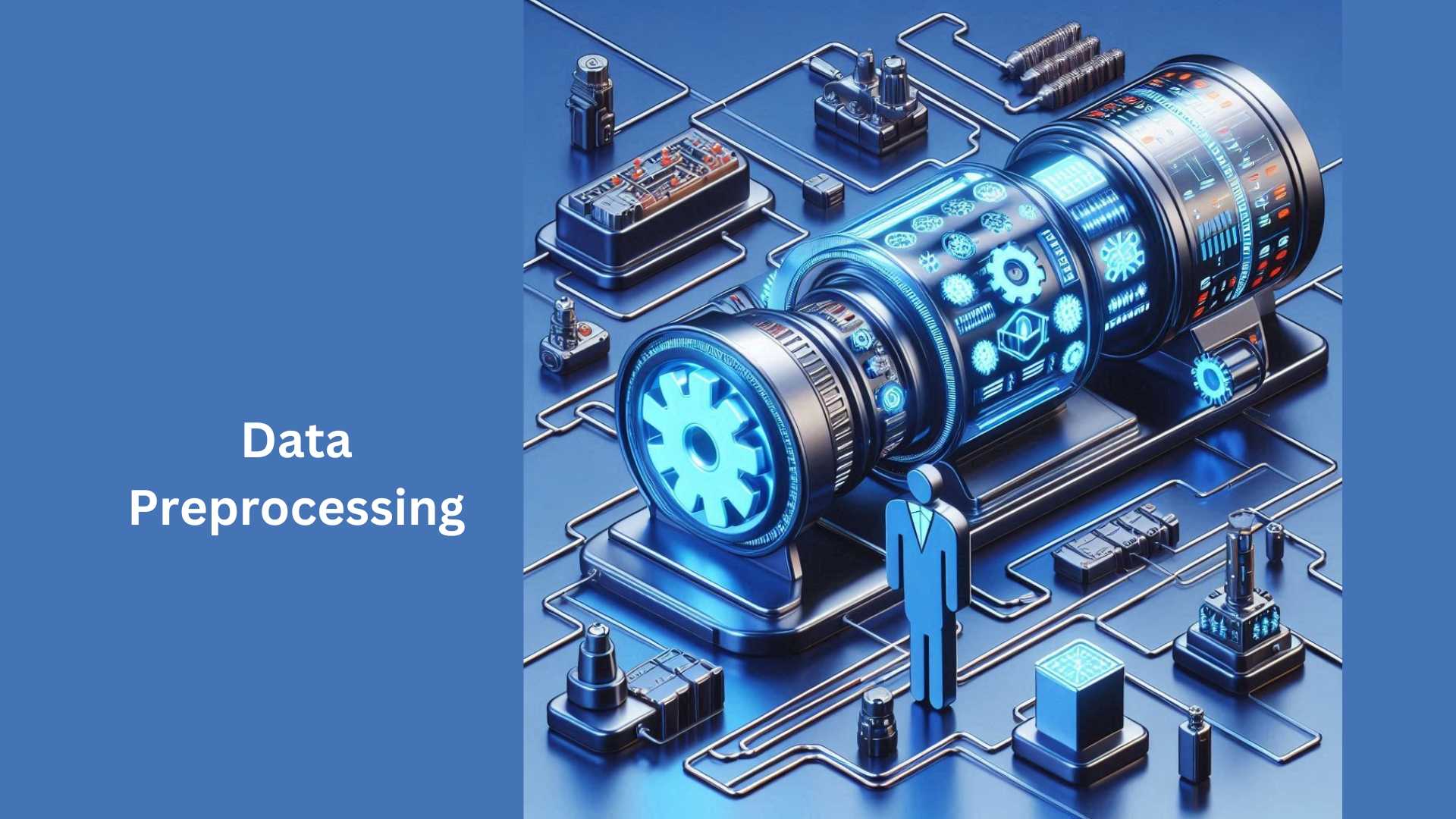In the realm of MLOps, where machine learning models take center stage, data serves as the lifeblood. Its quality, accessibility, and efficient management directly correlate to the success of these models. When dealing with large datasets, choosing the right database and storage solutions becomes paramount for ensuring efficient training, deployment, and ongoing operation of your ML models.
This chapter delves into navigating this crucial aspect of MLOps infrastructure, focusing on:
- Understanding your data: Demystifying the characteristics and requirements of your large datasets.
- Database options: Exploring different database solutions and their suitability for diverse MLOps workloads.
- Storage solutions: Evaluating various storage options for scalability, cost-effectiveness, and performance.
- Hybrid and distributed approaches: Examining the benefits and considerations of combining different approaches for data management.
Machine Learning Solutions: Unveiling Data Essentials
Before diving into specific solutions, it’s vital to understand the characteristics and requirements of your large datasets. Consider these key aspects:
- Volume: How much data are you dealing with? Is it measured in gigabytes, terabytes, or even petabytes?
- Variety: What types of data do you possess? Is it structured, following a predefined schema, or does it encompass unstructured data like text or images, or falls somewhere in between, like semi-structured JSON logs?
- Velocity: How frequently is your data updated? Is it real-time, streaming in continuously, or does it arrive in batches at specific intervals?
- Accessibility: How readily do your ML pipeline and applications need to access the data? Does it require real-time, low-latency access, or can it tolerate some latency for retrieval?
- Security and Compliance: Are there any specific security regulations or compliance requirements that dictate how data is stored and accessed?
By identifying these characteristics, you can tailor your data infrastructure choices to effectively address the unique needs of your large datasets.
Synergizing Databases and Machine Learning Solutions
MLOps workflows typically involve different stages, each with varying access patterns and performance needs. Here’s an overview of popular database options and their suitability for different stages:
- Relational Databases (RDBMS): These familiar databases (e.g., MySQL, PostgreSQL) excel at storing structured data with well-defined schemas and performing efficient queries. They are ideal for managing smaller datasets for model training or serving specific features. However, their scalability may be limited for extremely large datasets.
- Strengths:
- Structured Data: Ideal for storing well-defined, schema-based data like model metadata, training configurations, and experiment results.
- ACID Compliance: Guarantees data consistency and integrity through Atomicity, Consistency, Isolation, and Durability (ACID) properties.
- SQL Support: Familiar and widespread SQL querying language for efficient data retrieval and manipulation.
- Limitations:
- Scalability: Performance can degrade with extremely large datasets due to limitations in horizontal scaling.
- Schema Rigidity: Rigid schema structure might hinder flexibility for evolving data in MLOps experimentation.
- Suitability:
- Ideal for storing smaller datasets and managing model metadata, experiment logs, and configuration details.
- Not recommended for storing large, unstructured or semi-structured datasets used in training or feature engineering stages.
- NoSQL Databases: These offer greater flexibility and scalability for handling various data formats:
- Strengths:
- Scalability: NoSQL databases excel at scaling horizontally by adding more nodes to the cluster, making them well-suited for handling large and growing datasets. This becomes increasingly crucial in MLOps where data volume can often increase significantly over time.
- Flexibility: Unlike RDBMS with their rigid schemas, NoSQL databases offer flexible data models like documents, key-value pairs, or wide columns. This flexibility allows for storing unstructured, semi-structured, and even schema-less data, catering to the diverse data formats encountered in various stages of ML pipelines.
- Performance: NoSQL databases often boast high performance for specific operations. Certain types like key-value stores excel at fast reads and writes, while others might be optimized for efficient querying of specific data points.
- Limitations:
- Limited schema enforcement: While flexibility can be advantageous, it also comes with the trade-off of weaker schema enforcement compared to RDBMS. This can lead to potential inconsistencies and challenges with data quality management if not carefully managed.
- Complex querying: NoSQL databases often require specific query languages or APIs tailored to their data model. This can be more complex to learn and manage compared to the familiar SQL language used in RDBMS, potentially requiring specialized expertise for querying and manipulating data.
- Limited ACID transactions: Unlike RDBMS, some NoSQL databases offer weaker support for ACID (Atomicity, Consistency, Isolation, Durability) transactions. This can be a concern for stages requiring strict data consistency and ensuring data integrity during operations.
- Suitability:
- Feature Engineering and Exploratory Data Analysis (EDA): Document stores like MongoDB and Elasticsearch are well-suited for storing and querying diverse data, including log files, user interactions, and sensor readings, which are often used during feature engineering and EDA stages.
- Model Monitoring and Experiment Tracking: Document stores can also be valuable for storing and tracking model performance metrics, logs, and experimental results, making them suitable for model monitoring and experiment tracking purposes.
- Model Serving (limited use cases): Key-value stores like Redis and Memcached can be particularly useful for caching frequently accessed data like model parameters or intermediate results during model serving, offering fast retrieval for real-time predictions.
- In-memory Databases (e.g., Apache Spark in-memory tables): For specific use cases involving real-time processing or highly frequent model predictions, in-memory databases store data in RAM, offering extremely fast access but limited capacity compared to traditional storage options.
- Strengths:
- Speed: Offer unparalleled data access speeds due to data residing in RAM, enabling real-time processing and high-throughput retrieval.
- Limitations:
- Limited Capacity: Capacity is restricted by available RAM, making it unsuitable for storing large datasets.
- Data Volatility: Data is lost upon server restarts or crashes, requiring additional persistence mechanisms.
- Suitability:
- Best suited for specific use cases demanding real-time processing or very frequent model predictions, such as fraud detection or recommender systems.
- Not recommended for storing persistent data or handling large datasets.
The choice of the database depends on the specific data characteristics, access patterns, and performance requirements of each stage in your MLOps workflow.

Integrating Machine Learning with Storage Solutions
Beyond databases, choosing the right storage solution is crucial for efficiently managing large datasets throughout the ML lifecycle. Consider these options:
- Cloud Storage (e.g., AWS S3, Azure Blob Storage, Google Cloud Storage):
These offer scalable, cost-effective storage for large datasets with pay-as-you-go models and support for various data formats. They are ideal for archiving raw data, storing model checkpoints, and managing intermediate results during training pipelines.
- Advantages:
- Scalability: Easily scales up or down based on data volume, making it ideal for dynamic workloads.
- Cost-Effectiveness: The pay-as-you-go model ensures you only pay for the storage you use.
- Accessibility: Data is readily accessible from anywhere with an internet connection, facilitating collaboration and remote access.
- Durability and Reliability: Cloud providers offer high availability and redundancy, ensuring data protection against hardware failures.
- Variety of Options: Choose from different storage classes optimized for performance, cost, or frequency of access.
- Use Cases:
- Archiving raw data for future reference or analysis.
- Storing model checkpoints and intermediate results during training pipelines.
- Sharing large datasets with collaborators or across different environments.
- Backup and disaster recovery for critical data.
- Distributed File Systems (e.g., HDFS, Ceph): These enable distributed storage across multiple nodes, providing scalability and fault tolerance for handling massive datasets. They are commonly used for parallel processing of large datasets in distributed computing frameworks like Apache Spark.
- Advantages:
- Scalability: Horizontally scales by adding more nodes, enabling parallel processing of large datasets.
- Fault Tolerance: Data replicas spread across nodes ensure data availability even in case of node failures.
- High Throughput: Enables fast read and write operations, suitable for demanding workloads.
- Use Cases:
- Large-scale data processing with frameworks like Apache Spark.
- Collaborative data access and sharing when working with distributed teams.
- Managing large, frequently accessed datasets used for training or inference.
- Object Storage: Similar to cloud storage, object storage offers scalable, cost-effective storage for unstructured and semi-structured data, often used for storing logs, images, or audio files associated with ML projects.
- Advantages:
- Scalability: Highly scalable for storing massive amounts of unstructured and semi-structured data.
- Cost-Effectiveness: Often more cost-efficient than traditional file systems for storing large, infrequently accessed data.
- Flexibility: Supports various data formats without requiring specific schemas.
- Use Cases:
- Storing logs, images, audio files, and other unstructured data associated with ML projects.
- Archiving historical data for long-term retention.
- Backup and disaster recovery for large, non-critical data.
- Data Lakes: These act as central repositories for raw data in their native format, integrating with various data sources. They are often used for data exploration and feature engineering tasks in the early stages of the ML lifecycle.
- Advantages:
- Flexibility: Stores raw data in its native format, facilitating various data exploration and analysis tasks.
- Scalability: Can handle large volumes of diverse data from various sources.
- Integration: Integrates with various data processing tools and frameworks for data preparation and feature engineering.
- Use Cases:
- Data exploration and discovery in the early stages of ML projects.
- Feature engineering and data preparation tasks before model training.
- Combining structured and unstructured data for broader insights.
- Data Warehouses: These are optimized for analytical workloads, storing structured data in a schema-based format. They are better suited for querying and reporting on aggregated data after training or for business intelligence purposes.
- Advantages:
- Performance: Optimized for fast querying and analysis of large datasets.
- Structured Data: Stores data in a defined schema, enabling efficient querying and reporting.
- Aggregation: Enables easier analysis of aggregated data compared to data lakes.
- Use Cases:
- Analyzing historical data and trends after model training.
- Generating reports and dashboards for business intelligence purposes.
- Identifying key metrics and performance indicators for ML models.
Choosing the right storage solution depends on various factors:
- Data characteristics: Consider structure, size, and access frequency.
- Workload requirements: Evaluate needs for scalability, performance, and cost-effectiveness.
- Integration with existing infrastructure: Ensure compatibility with other tools and frameworks used in your MLOps pipeline.
It’s important to consider factors like scalability, cost, performance, and data lifecycle management when choosing the appropriate storage solution.
- Scalability: Ensure the solution can handle the expected growth of your data volume.
- Cost: Evaluate the pricing models and choose options that align with your budget and usage patterns.
- Performance: Consider factors like access speed, throughput, and latency, depending on your specific needs.
- Data Lifecycle Management: Implement strategies for archiving, deleting, or migrating data based on its relevance and usage.
Blending Hybrid and Distributed Methods: A Synthesis
Often, a single database or storage solution won’t suffice for the diverse needs of MLOps. Combining different approaches can offer the best of both worlds:
- Hybrid Architecture: This involves using a combination of different databases and storage solutions depending on their specific strengths. For example, you could leverage a relational database for storing model metadata and configuration, a document store for logs and user interactions, and cloud storage for archiving raw data and model checkpoints.
- Distributed Computing Frameworks: These frameworks (e.g., Apache Spark, Apache Flink) enable distributed processing of large datasets across multiple nodes. They often have built-in storage solutions (e.g., HDFS) and can seamlessly integrate with various databases and cloud storage services, facilitating efficient processing and management of large datasets.
Choosing the right combination depends on the specific needs of your MLOps pipeline and the complexity of your data management requirements.
Conclusion
Selecting the right data infrastructure for MLOps requires careful consideration of various factors. By understanding your data’s characteristics and requirements, exploring different database options for diverse needs, evaluating storage solutions for scalability and performance, and potentially combining different approaches, you can build a robust and efficient foundation for managing large datasets throughout the ML lifecycle. Remember, there’s no one-size-fits-all solution, and the ideal infrastructure will depend on the specific context and priorities of your MLOps project.
Additional Considerations:
- Cost Optimization: Continuously monitor and optimize data storage costs by exploring options like data compression, archiving inactive data, and leveraging tiered storage based on access frequency.
- Data Security and Governance: Implement robust security measures for data access control, encryption, and compliance with relevant regulations throughout the data lifecycle.
- Monitoring and Performance Management: Continuously monitor data pipelines and storage solutions for performance bottlenecks and resource utilization to ensure efficient data access and processing.









